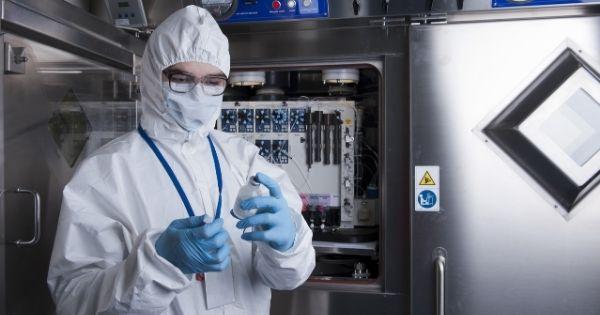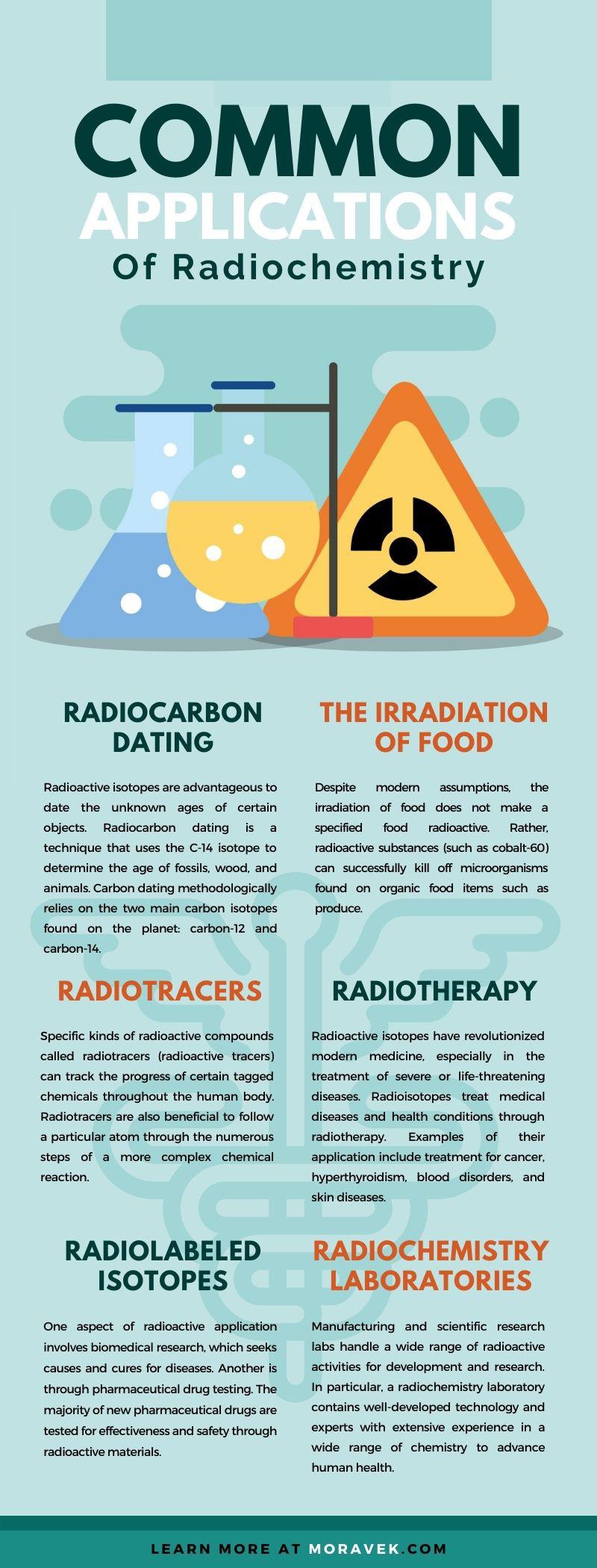
Henry Becquerel, a French physicist, is said to be the first human to discover evidence of natural radioactivity—which is the spontaneous emission of radiation from a singular material. This natural force benefits humankind in an assortment of ways. The field known as radiochemistry exists today because of his initial discovery, and the advancements of the phenomenon ever since.
Radiochemistry is a specified scientific branch that studies the chemistry of radioactive material or substances. In particular, radiochemistry studies both artificial and natural radioisotopes. This branch of science utilizes radioactive isotopes in a wide array of applications in various fields. Professionals expertly use basic ideas of organic, inorganic, physical, and analytical chemistry to manipulate radioactive material.
During its operation, radiochemistry is further defined by activity. Radiochemists put radioisotopes through various procedures and practices in areas outside of the field of chemistry. Radiochemical techniques are characteristically high-tech. These techniques also require careful attention to detail, recurring practice to develop an adequate skillset, and underlying knowledge of resourceful scientific principles. Let’s examine the common applications of radiochemistry more closely.
The Use of Radioisotopes
Because radiochemistry studies the chemical and physical phenomena of radioactive materials, applications primarily involve minuscule amounts. The very presence of radioactivity implies the use of particular safety concerns and regulatory measures. There are also limitations to application in comparison to ordinary chemistry techniques.
Radioisotopes have a variety of unique aspects. What makes these radioactive isotopes extraordinary is their capabilities for easy detection, alongside their quantitative measurement ability. The applications of radioisotopes to various fields are valuable assets worth noting. Without their use, our high standard of health and enduring quality of life would not be possible.
Radiocarbon Dating
Radioactive isotopes are advantageous to date the unknown ages of certain objects. Radiocarbon dating is a technique that uses the C-14 isotope to determine the age of fossils, wood, and animals. Carbon dating methodologically relies on the two main carbon isotopes found on the planet: carbon-12 and carbon-14.
Carbon-14 is constantly produced in the Earth’s atmosphere as it collides with nitrogen-14. Because living organisms breathe in and store carbon, any living organism takes in the same carbon mixture of the Earth’s atmosphere to feature the exact amount of isotopes within its body.
Ergo, when the organism is no longer living, this process stops occurring. The ratio within its body will stay the same as the atmosphere was when the organism died. As time goes on, the radioactive element of carbon-14 within the dead organism will decay away while the amount of carbon-12 will remain the same, as it has a longer half-life. Conclusively, scientists use radioactive elements to measure the current ratio of the organism. This dating process determines the relative age of the organism.
The Irradiation of Food
Despite modern assumptions, the irradiation of food does not make a specified food radioactive. Rather, radioactive substances (such as cobalt-60) can successfully kill off microorganisms found on organic food items such as produce. Exposure to the radiation rids newly harvested produce of generic bacteria that ordinarily causes quick spoilage.
This radioactive process extends the shelf-life of these products to keep them fresh for a longer period of time. Examples of such products include berries, tomatoes, mushrooms, eggs, and certain types of meats.
Radiotracers: The Study of Chemical Reactions
Specific kinds of radioactive compounds called radiotracers (radioactive tracers) can track the progress of certain tagged chemicals throughout the human body. Therefore, a tracer is any synthetic substance used for following a particular pathway through a chosen structure. Radioactive isotopes are fairly effective for tracing because their radioactivity is easily detectable, which yields useful information for specific identification and the ongoing physical, chemical, or biological process at hand.
However, radiotracers are also beneficial to follow a particular atom through the numerous steps of a more complex chemical reaction. One of the most common applications of radiochemistry involves chemical reactions. Scientists track the pathways of selective atoms by following their radioactivity during this process. All they need to do is fuse natural radioactive atoms with reactant molecules.
To give a detailed instance, plants use photosynthesis to synthesize CO2 and H2O to produce oxygen. But yet, how are scientists aware of exactly where that oxygen originates from? Scientists used a radiotracer (O-18) to discover that the evolved oxygen in the well-known process came from H2O. In this manner, the exact steps of chemical processes would remain unknown without such use of radioactivity.
Nuclear Medicine: Radiotherapy
The widespread application of medicinal radioactivity uses radioisotopes for major clinical diagnosis or treatment. Physicians and surgeons annually perform millions of medical procedures and tests. Radioactive isotopes have revolutionized modern medicine, especially in the treatment of severe or life-threatening diseases. Radioisotopes treat medical diseases and health conditions through radiotherapy. Examples of their application include treatment for cancer, hyperthyroidism, blood disorders, and skin diseases.
In particular, physicians use high-energy radiation to kill off cancer cells, as this natural force damages the cells' DNA. Radiotherapy is highly effective against varieties of cancer because cancerous cells tend to reproduce quickly. This rapid rate of production means the cells are increasingly vulnerable and sensitive to radiation.
Radiolabeled Isotopes: Application of Radiopharmaceuticals
Besides direct radiotherapy techniques, another vitally important form of nuclear medicine is found in medical research and testing. One aspect of radioactive application involves biomedical research, which seeks causes and cures for diseases. Another is through pharmaceutical drug testing. The majority of new pharmaceutical drugs are tested for effectiveness and safety through radioactive materials.
Radiopharmacy is a specialty science concerned with the preparation and dispensing of radiopharmaceuticals. Radiopharmaceuticals are “unique medicinal formulations” made up of active pharmaceutical ingredients (APIs) and excipients (inactive delivery components). The use of radioactive compounds in clinical trial tests determines if the pharmaceutical in question is reaching the intended target area—and if the pharmaceutical has an effect on non-target areas.
Radiochemistry Laboratories
Manufacturing and scientific research labs handle a wide range of radioactive activities for development and research. In particular, a radiochemistry laboratory contains well-developed technology and experts with extensive experience in a wide range of chemistry to advance human health.
Moravek is a leading radiochemistry laboratory that supplies radiolabeled compounds. Major biopharma companies and research institutions have trusted our work for campaigns and projects for over 45 years. We provide custom synthesis services to produce stable radiolabeled compounds, which support worldwide research and clinical trials. Contact us with any questions about the services we provide.

